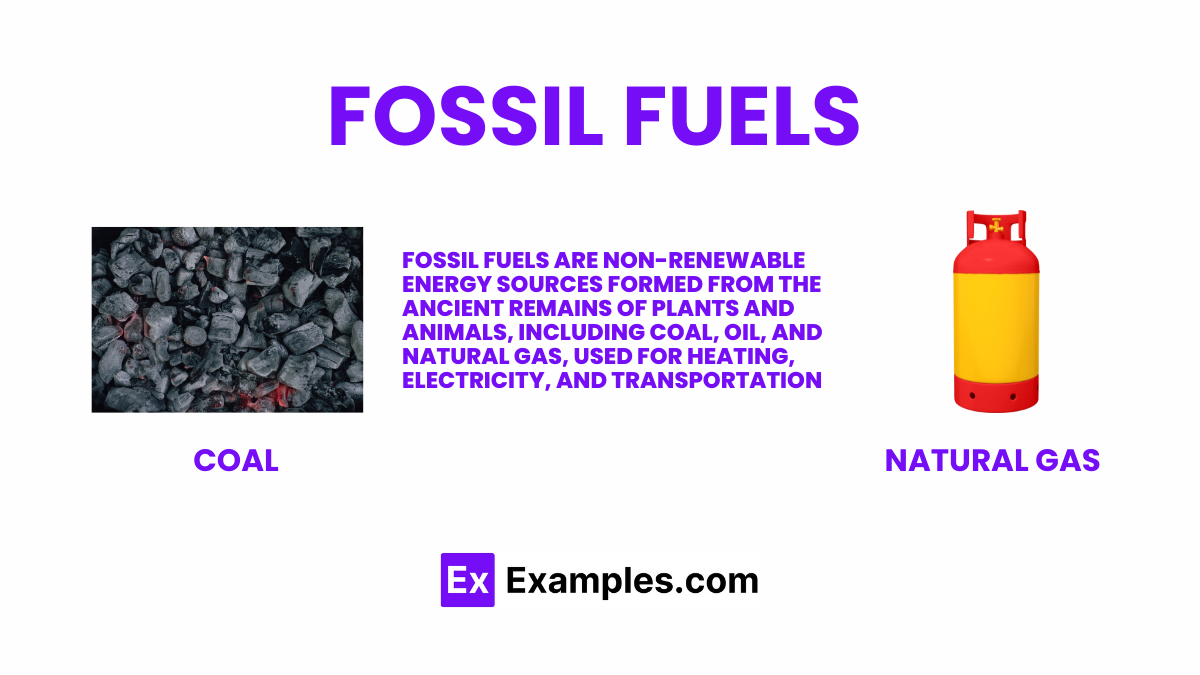What are fossil fuels primarily composed of?
Metals
Organic matter
Minerals
Water


Embark on a journey through the compelling world of fossil fuels, the bedrock of modern civilization. Fossil fuels, including coal, oil, and natural gas, have powered human progress for centuries, driving industrial advancements, shaping economies, and fueling the daily lives of billions. This guide unveils the origins, extraction methods, and pivotal role of these energy titans, alongside their environmental impacts and the global quest for sustainable alternatives. Dive into the essence of energy that illuminates our world and propels humanity forward.
Fossil fuels are natural sources of energy formed from the remains of living organisms that lived millions of years ago. Over time, heat and pressure transformed these remains into coal, oil, and natural gas. These fuels are called “fossil” fuels because they are derived from ancient fossils. They are extracted from the Earth and used to produce energy for heating, transportation, electricity generation, and various industrial processes. Fossil fuels are a major source of energy worldwide but burning them releases carbon dioxide, a greenhouse gas that contributes to climate change.
Among fossil fuels, petroleum, commonly referred to as oil, stands out as a prime example due to its versatility, widespread use, and significant impact on the global economy. Petroleum is a liquid mixture of hydrocarbons that is present in certain rock strata and extracted to produce fuels, including gasoline, diesel, and jet fuel, as well as heating oil and kerosene.
Versatility: Petroleum is not only used for fuel but also as a raw material for various products such as plastics, synthetic fibers, pharmaceuticals, and cosmetics. This wide range of applications makes it an integral part of daily life and various industries worldwide.
Energy Density: Oil has a high energy density, meaning it provides a significant amount of energy per unit volume. This makes it an efficient source of fuel for transportation, heating, and electricity generation.
Global Trade: Petroleum is a major commodity in international trade, with its prices influencing the global economy. Countries that produce and export oil have significant geopolitical influence, while oil-importing countries often face economic challenges due to fluctuating oil prices.
Extraction and Refining: Advanced technologies allow for the extraction of petroleum from challenging environments, including offshore drilling and tar sands. After extraction, oil is refined into various products, each with specific uses, showcasing the complexity and sophistication of the petroleum industry.
Fossil fuels, including coal, oil, and natural gas, have been the cornerstone of global energy supply due to their unique characteristics. However, their use also brings significant drawbacks, particularly concerning environmental impact and sustainability.
Fossil fuels, the mainstay of global energy for centuries, are derived from the decomposed remains of ancient plants and animals, subjected to heat and pressure over millions of years beneath the Earth’s surface. They come in three primary forms: coal, oil, and natural gas, each with distinct formation processes and uses.
Burning fossil fuels, including coal, oil, and natural gas, is a primary source of energy production worldwide. However, this process releases a variety of pollutants and greenhouse gases into the atmosphere, leading to significant environmental and health impacts.
The use of fossil fuels—coal, oil, and natural gas—has been instrumental in powering economic development and industrialization around the world. However, their extraction, processing, and combustion have significant environmental and health consequences. Here are some key facts highlighting the effects of fossil fuels.
Fossil fuels have powered human advancement for centuries, driving economic growth and facilitating modern conveniences. However, their environmental and health impacts, including air pollution and climate change, underscore the urgent need for sustainable alternatives. Transitioning to renewable energy sources is imperative to mitigate these effects, ensuring a cleaner, healthier, and more sustainable future for generations to come.
Text prompt
Add Tone
The Best Example of Fossil Fuels: Petroleum (Oil)
Advantages and Disadvantages of Fossil Fuels
What are fossil fuels primarily composed of?
Metals
Organic matter
Minerals
Water
Which of the following is NOT a fossil fuel?
Coal
Oil
Natural Gas
Biomass
Which fossil fuel is primarily used for electricity generation?
Oil
Natural Gas
Coal
Uranium
What is the main component of natural gas?
Ethane
Propane
Methane
Butane
Which country is the largest producer of oil?
Saudi Arabia
Russia
United States
Canada
What environmental problem is directly associated with burning fossil fuels?
Ozone depletion
Acid rain
Water pollution
Soil erosion
What is the process of converting coal into a liquid fuel called?
Hydrocracking
Pyrolysis
Liquefaction
Gasification
Which fossil fuel has the highest carbon dioxide emissions per unit of energy produced?
Natural Gas
Oil
Coal
Wood
What is a major disadvantage of using fossil fuels?
High cost of extraction
Limited availability
Environmental pollution
Renewable nature
Which sector is the largest consumer of oil?
Transportation
Residential heating
Agriculture
Manufacturing
Before you leave, take our quick quiz to enhance your learning!

